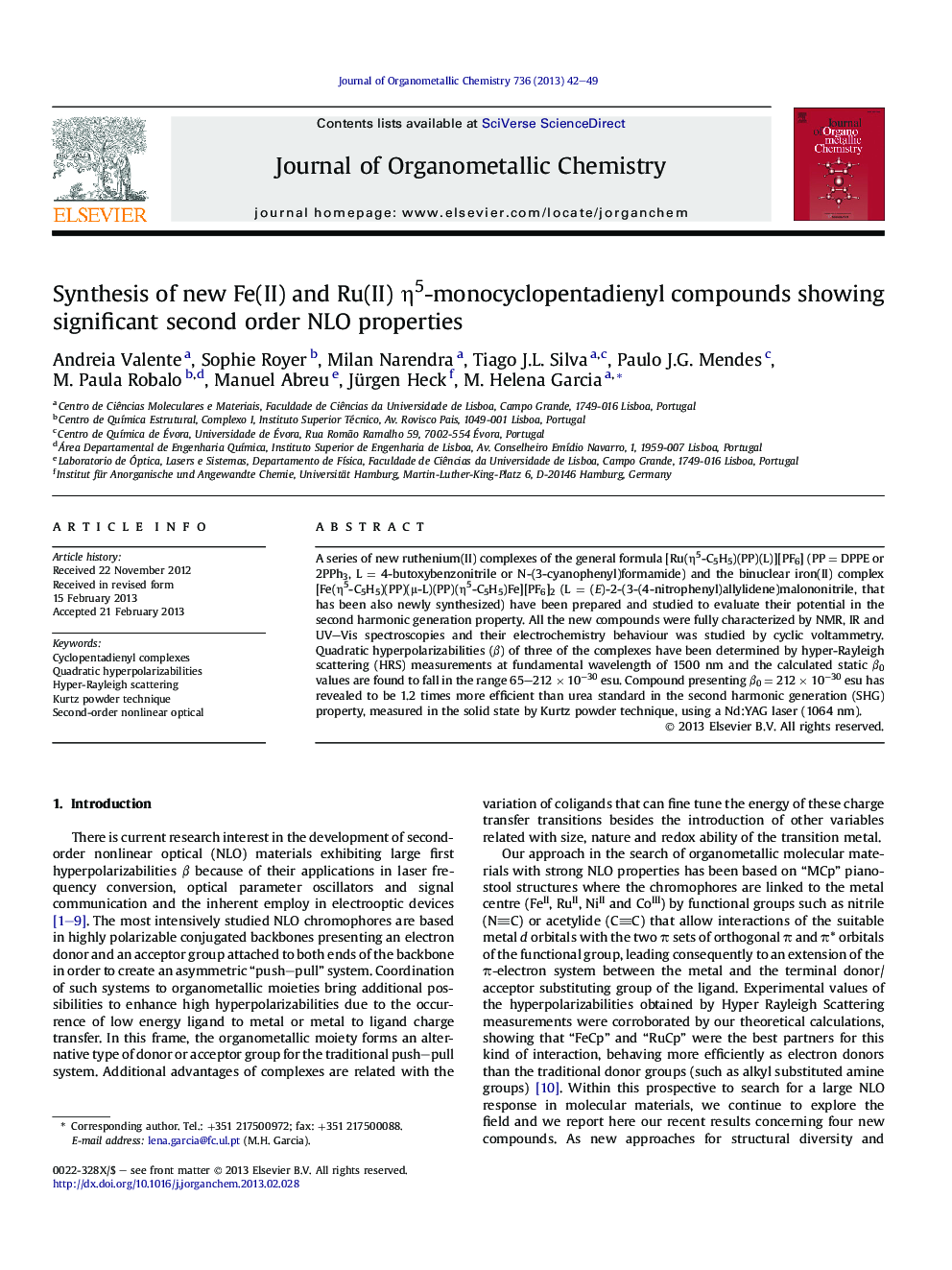| Article ID | Journal | Published Year | Pages | File Type |
|---|---|---|---|---|
| 1322781 | Journal of Organometallic Chemistry | 2013 | 8 Pages |
A series of new ruthenium(II) complexes of the general formula [Ru(η5-C5H5)(PP)(L)][PF6] (PP = DPPE or 2PPh3, L = 4-butoxybenzonitrile or N-(3-cyanophenyl)formamide) and the binuclear iron(II) complex [Fe(η5-C5H5)(PP)(μ-L)(PP)(η5-C5H5)Fe][PF6]2 (L = (E)-2-(3-(4-nitrophenyl)allylidene)malononitrile, that has been also newly synthesized) have been prepared and studied to evaluate their potential in the second harmonic generation property. All the new compounds were fully characterized by NMR, IR and UV–Vis spectroscopies and their electrochemistry behaviour was studied by cyclic voltammetry. Quadratic hyperpolarizabilities (β) of three of the complexes have been determined by hyper-Rayleigh scattering (HRS) measurements at fundamental wavelength of 1500 nm and the calculated static β0 values are found to fall in the range 65–212 × 10−30 esu. Compound presenting β0 = 212 × 10−30 esu has revealed to be 1.2 times more efficient than urea standard in the second harmonic generation (SHG) property, measured in the solid state by Kurtz powder technique, using a Nd:YAG laser (1064 nm).
Graphical abstractNew organometallic Ru(II) and Fe(II) compounds revealed values in the 95–618 × 10−30 esu range by Hyper-Rayleigh Scattering (HRS) measurements at 1500 nm.Figure optionsDownload full-size imageDownload as PowerPoint slideHighlights► Four new ruthenium(II) and iron(II) piano stool structured complexes. ► Spectroscopic data suggest interesting potentiality as frequency doublers. ► Static β0 values for the new complexes fall in the range 65–212 × 10−30 esu. ► One compound is 1.2 times better than urea for 2nd harmonic generation (SHG).
